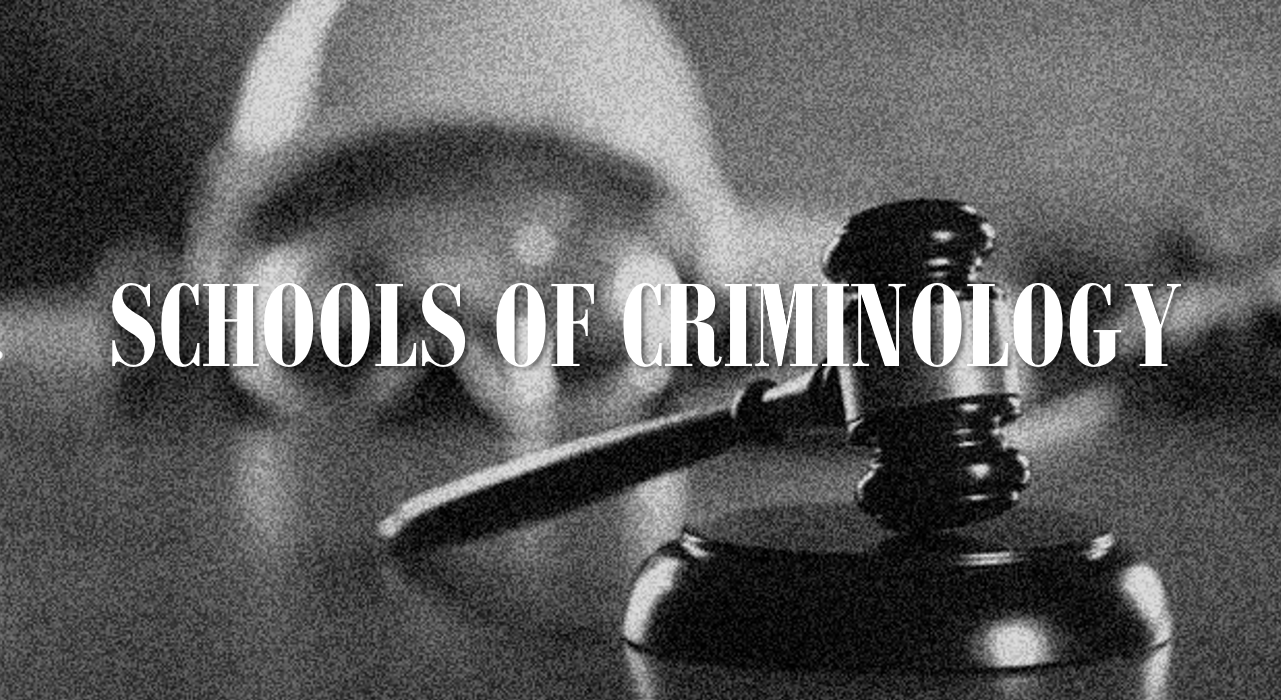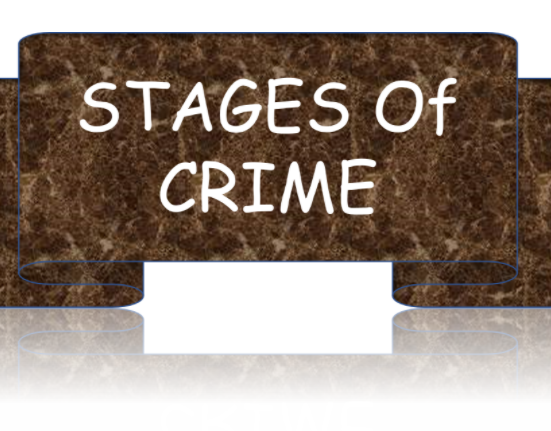This article, “SCHOOLS OF CRIMINOLOGY” is written by SITANSHU SHEKHAR SRIVASTAVA, a 4th-year law student at MIT WPU.
Criminology
Criminology is the study of crime and criminal conduct that is informed by sociological concepts as well as principles from other non-legal domains such as psychology, economics, statistics, and anthropology. Criminologists investigate a wide range of connected topics, including Criminals have certain characteristics.
Origin Of Criminology
Between the late 1700s and the early 1800s, Europe saw the birth of criminology. The founders of the classical school of criminology were crime and punishment thinkers. Cesare Beccaria and Jeremy Bentham are two of these people. Despite the fact that torture was being used all over the continent, particularly for confessions and testimony, the classical school of thought held that torture was evil. Crimes are committed by free will, according to the traditional school of thought. People are aware of what they are doing and should face consequences. These penalties should be severe enough to prevent others from committing crimes and should be harsher than the criminal gain.
A similar hedonistic hypothesis that humans can inhibit emotions and behaviours by incentive manipulation is seen in contemporary criminology. Thus, criminology nowadays includes classifying criminal motives as instrumental or expressive. Instrumental motivation means that the offender has additional incentive to commit a crime outside of the act itself. There is a certain advantage. Contract killers, for example, have the added incentive of money. Gang members may conduct crimes in order to gain membership. When there are obvious indicators of instrumental motivation, offenses are often punished harsher since there is proof of premeditation. Expressive motivation differs from instrumental motivation in that it incorporates emotional acts. Crime is the desired outcome. Common emotions in the expression of motivational errors include anger or rage, fear, jealousy, and desire. Perpetrators often engage in a heated period to overcome the source of frustration. Fifty-seven percent of these crimes are committed against acquaintances with extramarital friends and relationships and fifty-three percent of murders are blamed on arguments.
Schools of Criminology
Sutherland emphasized that a discussion of ‘schools of criminology’ describes theories including broad theories of the causes of criminal activity, and their approaches to dealing with it Crime in Kakales- day life-perspective a common among offenders revealed.
The schools of criminology can be divided as:
- Pre- Classical School of Criminology
- The Classical School
- The Neo – Classical School of Criminology
- The Positive School
- Pre-Classical School
In the 17th and 18th centuries, religious influence heavily permeated State affairs, and this period coincided with the prominence of Saint Thomas Aquinas (1225 – 1274) in Europe. As scientific understanding was limited at that time, the concept of crime remained hazy and unclear. The prevailing belief was that humans were inherently simple beings, and their actions were guided by a higher force—specifically, a ‘demon’ or ‘devil.’ This perspective led to the term ‘demonological school of criminology’ for this period. Consequently, it was believed that individuals committed wrongful deeds not out of their own volition, but due to the sway of external powers. Investigating the true causes of crime was not pursued during this early stage of criminological thought.
The demonological theory, which was put forth, interpreted crime and criminals as manifestations of an individual being under the influence of a devil or demon. The prescribed remedy for this condition was often thought to be the demonstration of the spirit’s effectiveness. This involved practices like rituals, offerings, and tests involving water and fire to identify the spirit and liberate the afflicted individual from its ‘malevolent influence.’ The method of trial by combat was commonly employed to determine the fate of the accused. However, the society’s authority to punish wrongdoers was widely acknowledged. The offender was perceived as inherently corrupt and was believed to be treatable through methods involving suffering and agony.
The concept of divine intervention, particularly via ordeals, was also prevalent in ancient India. Oaths and ordeals held significant significance within the antiquated legal framework for establishing the culpability of a wrongdoer. A prevailing notion surrounding these rituals was that “when human efforts prove insufficient, turning to supernatural methods of evidence becomes highly necessary.” The legitimacy of these practices has faced scrutiny dating back to ancient times, as seen in the Purvapaksa argumentation. Nevertheless, with the arrival of British governance in India and the subsequent rationalization of penal legislation, this system gradually lost prominence and ceased to be employed.
- The Classical School
During the mid-18th century, Beccaria introduced his naturalistic theory of criminal behaviour, challenging the belief in all-powerful evil spirits. He gave significant importance to an individual’s mental processes and attributed criminal acts to the concept of “free will.” His ideas were greatly influenced by the utilitarian philosophy of his era, which heavily relied on hedonism—the “pain and pleasure theory.” This theory implied that people commit crimes through their own rational decisions, driven by the pursuit of pleasure and avoidance of pain. The central achievement of this school of thought was the proposition of a tangible criminal policy that could be easily applied without resorting to arbitrary punishments.
The fundamental principles of the classical school are:
- Man’s emergence from the State’s religious fanaticism involved the application of his reason as a responsible individual. This theory is based on the assumption that an individual can control his conduct by exercising his power of will and mind, meaning, the human behaviour is ‘self-generated’. The fear of punishment can bring a change in human will and persuade him to desist from committing crime.
- It is the act of an individual and not his intent which forms the basis for determining criminality within him. In other words, criminologists are concerned with the act of the criminal rather than his intent.
- The writers of this period accepted punishment as a principal method of infliction of pain, humiliation and disgrace to create fear in man to control his behaviour.
- Prevention of crime was considered more important than the punishment. Beccaria, in his work on “Crimes and Punishments” denounced retributive basis of punishment and observed that the aim of punishment should be to prevent criminal from committing new crimes against his countrymen, and to keep others from doing likewise.
- The right of the State to punish the offenders in the interest of public security was advocated during this period. Relying on the principle of hedonism, it was pointed out that individualization was to be the basis of punishment. In other words, punishment was to be awarded keeping in view the pleasure derived by the criminal from the crime and the pain caused to the victim.
- The exponents of classical school believed that criminal law primarily rests on positive sanctions. They abhorred torturous punishments and were against the arbitrary use of power by the judges
The classical school significantly advanced the progression of rationalized criminological thought, but it also had its limitations. One notable drawback of this school was its foundation on a theoretical assumption of free will, emphasizing the action itself while neglecting the psychological state of the offender. A notable mistake was its recommendation of identical punishment for identical offenses, thereby failing to differentiate between first-time wrongdoers and repeat offenders, as well as neglecting the varying levels of seriousness of different crimes.
- The Neo-Classical School
Soon, intellectuals recognized that proponents of the classical school had made a mistake by disregarding individual distinctions within specific circumstances. Treating first-time offenders and repeat offenders equally based solely on the similarity of their actions was a flawed approach. While in the classical period, handing down sentences was seen as a standard procedure, the subsequent neo-classical period acknowledged the necessity for diverse sentencing based on factors such as age, gender, mental state, and more. The proponents of the neo-classical perspective argued that individuals falling into specific groups, like minors, those with intellectual disabilities, the mentally ill, or those lacking competence, should receive more lenient treatment in terms of punishment. This leniency would apply regardless of the similarity of their criminal actions, as these individuals were deemed incapable of comprehending the distinction between right and wrong. The fundamental principles of the neo-classical school of criminology include:
- Neo-classists approached the study of criminology on scientific lines by recognizing that certain extenuating situations or mental disorders deprive a person of his normal capacity to control his conduct. Thus, they justified mitigation of equal punishment in cases of certain psychopathic offenders.
- Neo-classists were the first to bring out a distinction between the first-time offenders and recidivist. They supported individualization of offender and treatment methods which required the punishment to suit the psychopathic circumstances of the accused.
- The advocates of this school started with the assumption that man acting on reason and intelligence is self-determining person and therefore, is responsible for his conduct. But those lacking normal intelligence or having some mental depravities are irresponsible to their conduct and therefore, should be treated differently from the responsible offenders.
- Thought the neo-classists recommended lenient treatment for irresponsible offenders, they certainly believed that every offender, whether responsible or irresponsible, should be kept segregated from the society.
- It is through this school that attention of criminologists was drawn for the first time towards the fact that all crimes do have a cause.
- Neo-classists adopted subjective approach to criminology and concentrated their attention on the conditions under which an individual commits crime.
The primary significance of this school’s perspective lies in its introduction of certain modifications to the ‘free will’ theory. It proposed that an individual’s involvement in crime could be influenced by specific mitigating factors, which should be appropriately weighed when deciding upon the punishment. However, regarding its limitations, it’s important to note that advocates of this school held the belief that regardless of an individual’s responsibility or lack thereof, a criminal posed a threat to society and thus required removal from it.
- The Positive School
In the nineteenth century, specific French physicians had effectively proven that the motivation behind criminal behaviour was not the result of the offender’s “free will” or inherent wickedness. Instead, they identified that the true root of criminal tendencies could be traced back to certain anthropological characteristics present in the criminals. Some phrenologists aimed to illustrate the physiological workings of the brain, thus establishing a connection between criminal behaviour and the structure and operation of the brain. This development gave rise to what is known as the positive school of criminology.
Supporters of the positive school categorized criminality into four distinct types, namely:
- Physical criminal type
- Mental type
- Psychopath type, and
- Socio-economic disadvantage type
The proponents of this criminological approach consisted of three notable Italian scholars in the field: Cesare Lombroso, Raffaele Garofalo, and Enrico Ferri. It is due to the contributions of these individuals that this school is often referred to as the Italian School of Criminology.
Summary
This article delves into the evolution of criminology, examining its origins and key schools of thought. The pre-classical era attributed crime to external forces like demons. The classical school, led by Beccaria, emphasized free will and rational decisions behind criminal acts. The neo-classical school introduced nuance by considering individual circumstances in punishment. The positive school, associated with Italian scholars like Lombroso, linked criminal behaviour. to physiological and sociological factors. Each school contributed to shaping the understanding of crime’s origins and appropriate responses, from demonological beliefs to rational theories and scientific approaches in criminology.
Reference
https://ijirl.com/wp-content/uploads/2022/03/SCHOOLS-OF-CRIMINOLOGY-A-COMPARATIVE-ANALYSIS.pdf
https://www.usnews.com/best-graduate-schools/top-humanities-schools/criminology-rankings
https://owlcation.com/social-sciences/Schools-of-Criminology




Leave feedback about this